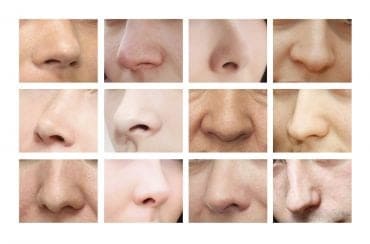
Some of the most innovative uses of smart mirrors with artificial intelligence can be found in the retail and automotive industries.
Smart mirrors are a great example of the use of continuous intelligence. They typically combine artificial intelligence, real-time image analysis, augmented reality, Internet of Things (IoT) technologies, and more. The benefits they deliver are driving the market for smart mirrors, which is expected to grow at a compound annual growth rate (CAGR) of almost 12% through 2025.
Applications vary greatly from industry to industry. Some of the most innovative uses can be found in the retail and automotive industries.
See also: Retail Market for AI Could Hit $8 Billion by 2024
In retail, smart mirrors are seen as one tool for brick and mortar stores to defend market share from online merchants. The devices are being used to improve customer engagement, deliver customized sales suggestions, upsell people on the spot, and increase sales. They accomplish this by combining information collected about a customer with predictive analytics to make intelligent recommendations.
One example of their use is to let people see what they would look like if they tried a product. At a cosmetic counter, a smart mirror might be used to show what different shades of lipstick or mascara looks like on the customer’s face. More advanced virtual makeup display systems would analyze the person’s face noting shape, colors, and tones and then recommend complementary products.
A similar use is to let a person see what different styles, colors, or fits would look like on their body. Such comparisons can be made on the showroom floor, but more often, retailers are putting smart mirrors in their dressing rooms.
Enticing a person to bring an item into the dressing room appears to be the killer app for smart mirrors. Retail stores only make sales to about a third of the shoppers who browse their stores, according to industry surveys. However, 76 percent of customers who try something on in a dressing room will end up making a purchase.
Various industry studies have found that customers make an effort to try an item on, there is a 75% chance (or higher) they will make a purchase.
The allure of a smart mirror in a dressing room to help the customer make a better, more customized selection might be enough to get more people to take that last step to try on clothes.
Better Service with Fewer Staff
Many brick and mortar retailers are struggling competing against online rivals. In what some are calling the retail apocalypse, more than 9,300 stores are expected to close this year. The trend has been building for years. Retailers closed a record 102 million square feet of store space in 2017, and in 2018 they closed another 155 million square feet.
Many stores that have stayed open have had to cut staff. Smart mirrors offer an incentive to give a store a try. And they can help compensate for fewer or less experienced staff by making personalized recommendations.
Other Applications
Smart mirrors are finding use in other markets, including automotive, healthcare, hospitality, and residential.
For example, many cars now include smart mirrors that display anything from temperature, direction, and GPS information to texts and phone details from a Bluetooth-connected phone. Many also display via augmented reality projections guidance instructions to avoid obstacles when backing up.
The acceptance of such mirrors is evident in that they are now widely available in automotive supply stores and online.
The bottom line with smart mirror technology is that truly innovative applications in different vertical industries can be developed. Such applications can take advantage of streaming data, including imagery of the customer in retail settings and other sources to make highly personalized recommendations.







